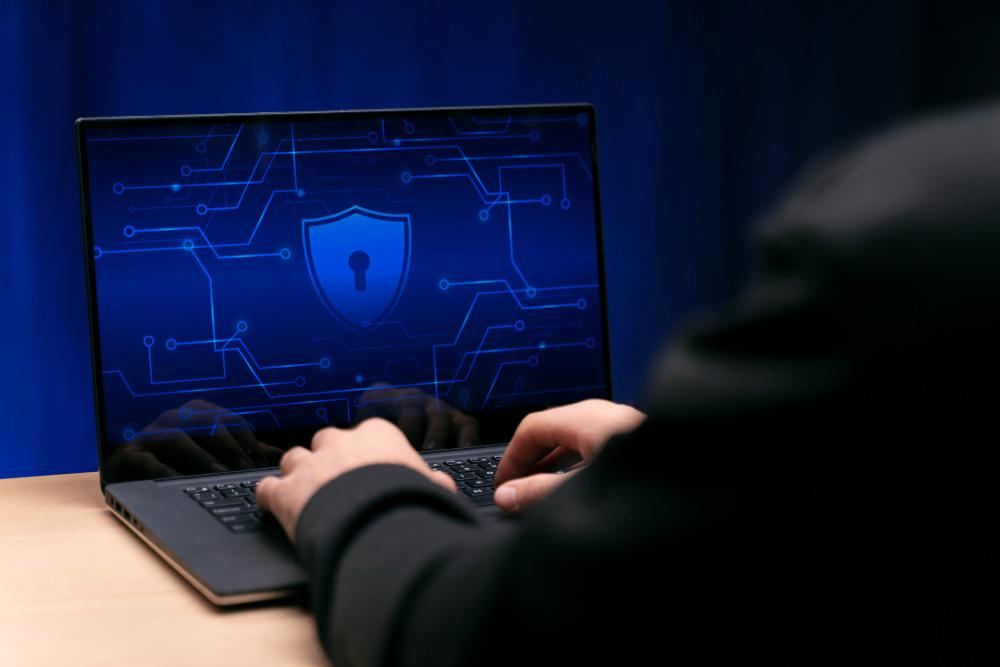CipherLocker, also referred to as “Clocker,” is a highly destructive ransomware strain that encrypts victims’ files and demands a ransom of 1.5 Bitcoin (BTC) for decryption. This ransomware appends a .clocker extension to affected files and drops a ransom note titled “README.txt.” Like most ransomware threats, it deletes backups and shadow copies to make recovery more difficult.
CipherLocker Ransomware Overview
The table below summarizes the main details of CipherLocker ransomware:
| Attribute | Details |
|---|---|
| Threat Name | CipherLocker (Clocker) Ransomware |
| Threat Type | Ransomware, Crypto Virus, File Locker |
| Encrypted File Extension | .clocker |
| Ransom Note File Name | README.txt |
| Ransom Amount | 1.5 BTC (~$143,000 at the time of writing) |
| Cybercriminal Contact | haxcn@proton.me |
| Bitcoin Wallet Address | xXmWOWIYrJTHcnxoWRT6GviwS53uQzipyV |
| Detection Names | Avast (FileRepMalware [Inf]), Emsisoft (Generic.Ransom.Hiddentear.A.522D4236), Fortinet (MSIL/Filecoder.73F9!tr.ransom), Kaspersky (VHO:Trojan-Ransom.MSIL.Encoder.gen), Microsoft (Ransom:Win32/Genasom) |
| Symptoms of Infection | Files become inaccessible, file extensions change to .clocker, ransom note appears, system restore points and backups are deleted. |
| Distribution Methods | Phishing emails, malicious attachments, torrents, fake software updates, drive-by downloads, malicious ads. |
| Damage Caused | Encryption of files, loss of backups, potential installation of additional malware, financial loss if ransom is paid. |
| Danger Level | Severe – High risk of data loss and system compromise. |
| Free Decryptor Available? | No |

Remove
CipherLocker Ransomware
With SpyHunter
Download SpyHunter now, and scan your computer for this and other cybersecurity threats for free!
CipherLocker Ransom Note
The ransomware drops the following ransom note in a text file named README.txt:
[NOTICE]
Your personal files have been encrypted by CipherLocker.
Please follow the instructions to recover your files.
[INSTRUCTIONS]
Payment Amount: 1.5 BTC
Bitcoin Address: xXmWOWIYrJTHcnxoWRT6GviwS53uQzipyV
Payment Deadline: 2025-02-22
[WARNING]
- Windows Shadow Copies have been deleted
- System Restore Points have been disabled
- Recycle Bin contents have been deleted
- Additional backup files have been removed
Contact Support with your Reference ID to obtain the decryption keys within the deadline.
Reference ID: -
[CONTACT SUPPORT]
haxcn@proton.me
You have until 2025-02-22 to complete the payment.Victims are strongly discouraged from paying the ransom, as there is no guarantee that the attackers will provide a decryption key.
How Does CipherLocker Infect Computers?
CipherLocker spreads primarily through:
- Phishing Emails – Malicious email attachments disguised as invoices, delivery updates, or security warnings.
- Malicious Attachments & Links – Contaminated Microsoft Office documents, PDFs, ZIP files, and executable files.
- Torrent Websites & Pirated Software – Downloading cracked software from unreliable sources.
- Fake Updates – Deceptive pop-ups prompting users to install fake browser or software updates.
- Drive-By Downloads – Automatic malware downloads when visiting compromised websites.
- Malicious Advertisements (Malvertising) – Ads that redirect users to sites hosting the ransomware payload.
- Backdoor Trojans – Attackers exploit trojans to install ransomware remotely.
- Removable Media – USB flash drives and external hard drives spreading the infection when connected.
How to Remove CipherLocker Ransomware (Clocker)?

Remove
CipherLocker Ransomware
With SpyHunter
Download SpyHunter now, and scan your computer for this and other cybersecurity threats for free!
To remove CipherLocker from your system, follow these steps:
Step 1: Boot into Safe Mode with Networking
- Restart your computer.
- Press
F8(on older versions) orShift + F8during boot. - Select Safe Mode with Networking.
For Windows 10 & 11 users:
- Hold Shift while clicking Restart.
- Go to Troubleshoot > Advanced options > Startup Settings.
- Press
F5to enter Safe Mode with Networking.
Step 2: Download and Install SpyHunter
- Open a web browser in Safe Mode with Networking.
- Download SpyHunter.
- Install SpyHunter by following the on-screen instructions.
Step 3: Run a Full System Scan
- Launch SpyHunter and click Start Scan.
- Wait for the scan to detect CipherLocker and other potential threats.
- Once the scan is complete, click Remove Threats to eliminate them.
Step 4: Restore Files from Backup (If Available)
Since CipherLocker deletes shadow copies and backups, recovering encrypted files without backups is difficult. If you have an external or cloud backup, restore your files from there.
Preventing Future Ransomware Infections
To avoid ransomware infections like CipherLocker, follow these security practices:
Enable Automatic Updates
- Keep Windows, antivirus software, and all applications up to date.
Be Cautious with Email Attachments
- Do not open suspicious attachments or links from unknown senders.
Use Strong Security Software
- Install SpyHunter for real-time threat protection.
- Use Windows Defender or another trusted anti-malware tool.
Backup Your Files Regularly
- Store backups in multiple locations, including cloud storage and offline drives.
Avoid Downloading from Untrusted Sources
- Do not download software from third-party sites or torrent networks.
Use a Firewall and Network Security Tools
- Enable Windows Firewall and use a VPN when accessing the internet.
Disable Macros in Office Files
- Do not enable macros unless absolutely necessary.
Use Strong Passwords and Enable MFA
- Strengthen account security with multi-factor authentication (MFA).
Final Thoughts
CipherLocker ransomware, also known as Clocker, is a severe cyber threat that encrypts personal files and demands an expensive ransom. Paying the ransom does not guarantee file recovery, so immediate removal of this ransomware is critical.
Using SpyHunter, you can scan and remove CipherLocker efficiently. However, to mitigate future attacks, regular backups, caution with emails, and strong security software are essential.

Remove
CipherLocker Ransomware
With SpyHunter
Download SpyHunter now, and scan your computer for this and other cybersecurity threats for free!





